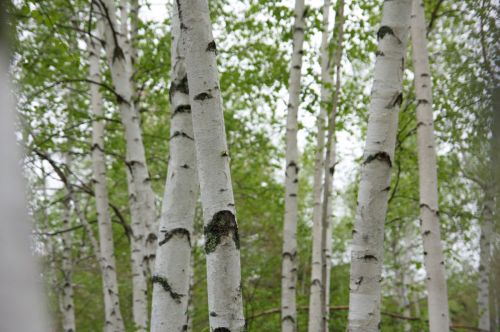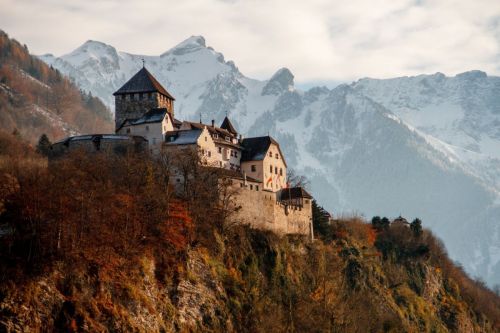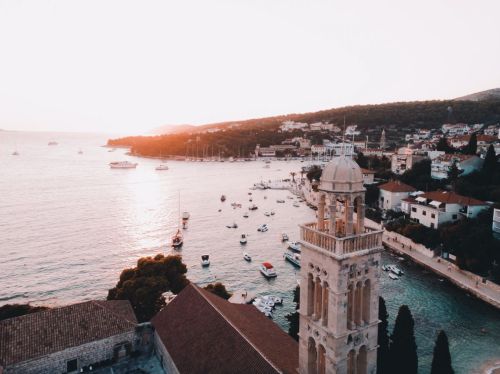Austria is a small country located in Central Europe. It is a mountainous country, with two-thirds of the area covered by the Alps. Due to its mountainous nature, it is one of the least populated countries in Central and Western Europe - more than twice as populated as neighboring Switzerland. Despite its location in the Alps, Austria has always been a country with communication and trade routes. For centuries, the Danube has connected Central Europe with the Balkan Peninsula, as well as the east with the west.
It borders eight countries: Germany in the northwest, the Czech Republic in the north, Slovakia in the northeast, Hungary in the east, Slovenia and Italy in the south, and Switzerland and Liechtenstein in the west.
The total length of the borders is 2832 km.
It is a federation of nine federal states, one of which is Vienna - the capital of the state.
The federal states (Bundeslands, each with its government) are Burgenland with its capital in Eisenstadt, Lower Austria with its capital in St. Polten, Upper Austria with its capital in Linz, Carinthia with its capital in Klagenfurt, Salzburg Land with its capital in Salzburg, Styria with its capital in Graz, Tyrol with its capital in Innsbruck, Vorarlberg with its capital in Bregenz, and Vienna.
The country's main urban areas are Vienna, Graz, Linz, Salzburg, and Innsbruck.
The estimated population of Austria according to data from 2020 is 8.935.112 people, with a population density of 106 people/km2.
It is Austrian German, the national variety of German, which is the native language of 88.6% of the population. Six national minorities recognized by Austria live mainly in the south of the country: Croats, Slovaks, Slovenians, Czechs, Hungarians, and Roma. Therefore, there are regional official minority languages there: Croatian (Burgenland-Croatian, spoken by approximately 19.5 thousand inhabitants of Burgenland), Slovenian and Hungarian.
About 5% were Protestants, the rest were of other denominations. These data come from the 2001 census because in the last census from 2011, religious affiliation could not be registered due to legal restrictions.
It is located in the north-eastern part of the country on the Danube. It is a statutory city (its administration is organized according to local law contained in the city statute), at the same time creating a separate federal state. Vienna is an administrative, industrial, commercial, academic, tourist, and cultural center of international importance.
The city was founded around 500 BC as a Celtic settlement. It obtained city rights in 1221, becoming one of the largest and most important cities of the Holy Roman Empire, later the capital of the Empire of Austria, Austria-Hungary, and in 1918, it became the capital of the Republic of Austria.
Vienna, next to Innsbruck and Salzburg, is the city most frequently visited by tourists.
The word is probably a translation of the medieval Latin Marchia orientalis into the local (Bavarian) dialect. Austria was a prefecture of Bavaria, created in 976. The word "Austria" is a Latinization of the German name and was first written down in the 12th century. At that time, the Danube basin in Austria (Upper and Lower Austria) was the easternmost area of Bavaria.
In the 10th century, the margravate was ruled by the Babenberg family (a family of margraves and princes of Frankish-Bavarian origin that ruled Austria from 976 to 1246). The Babenbergs initially had their residence in Pöchlarn and later in Melk. During their reign, the country was colonized, and monasteries and abbeys were founded (e.g. Klosterneuburg). In the first half of the 12th century. Henry Jasomirgott gave Austria the status of a principality (within the Holy Roman Empire), and Vienna - his seat, city - residence. After the expiration of the Babenberg dynasty, the Habsburg dynasty took power in Austria.
Thanks to their efficient marriage policy, the Habsburgs secured rule in France, gained the throne in Spain and, therefore, control over overseas colonies.
Today there are various museums there, including Schatzkammer - the treasury, or the Sisi Museum.
In 1529, the Turks unsuccessfully besieged Vienna, withdrew, but continued to threaten it for the next 150 years. In 1683, the Turks attacked Vienna again, but as a result of King of Poland John III Sobieski's relief from Vienna, they were repelled and driven beyond Belgrade.
During the Baroque period, wonderful buildings were built there, such as Schönbrunn Castle (today on the UNESCO World Cultural Heritage List) or the Salzburg Cathedral. Famous architects: Johann Fischer von Erlach, Lukas von Hildebrandt, and Jakob Prandtauer, as well as Daniel Gran, Paul Troger, and Franz Anton Maulbertsc, created their greatest works at that time. The reign of Empress Maria Theresa and her son Joseph II, who was a liberal, enlightened monarch, was a period of far-reaching reforms in almost every area of state and social life.
The French Revolution of 1789 and its consequences were a shock for the European noble families of that time. The Austrian state administration, Emperor Francis I, and Chancellor Metternich, reacted differently to the French events. Unlike in other countries, bourgeois rights were restricted and censorship was introduced. The townspeople began to withdraw from public life and locked themselves in their homes. This is how a new style was born - Biedermeier - a style in art, literature, music, and, above all, interior design. The center of cultural life was then concentrated in home salons, various branches of art flourished, and painters such as Ferdinand Georg Waldmüller and Friedrich Gauermann, composers such as Franz Schubert, and writers - Adalbert Stifter, Ferdinand Raimund, and Franz Grillparzer - began to gain fame.
Vienna continued to flourish during that period, new, magnificent buildings were built and eventually, it became one of the most important and largest European capitals. It also became a cultural center where the king of the waltz, Johann Strauss, created, and Sigmund Freud created a new branch of science - psychoanalysis.
At the turn of the century, many works in the Art Nouveau style were created there. Painters: Gustav Klimt and Egon Schiele, and architects - Otto Wagner and Adolf Loos worked there.
In 1914, there was a successful assassination attempt on the heir to the throne, Archduke Franz Ferdinand, in Sarajevo. This event became one of the flashpoints of World War I.
In 1916, Emperor Franz Joseph died, and the end of the war marked the end of the monarchy - Austria became a republic.
After the end of World War II, Austria became a republic again, but was under the control of the Allies: Great Britain, France, the USA and the Soviet Union.
Austria, located between countries separated by the "Iron Curtain", has become a gateway connecting the East with the West. It became a place where political refugees arrived after the uprising in Hungary in 1956 and after the "Prague Spring" in 1968.
The Iron Curtain disappeared at the turn of 1989/90, and in 1995 Austria joined the European Union. In 2002, it joined the eurozone.
It can be divided into three geographical regions; the largest of them, covering 62% of the country's area, is the Alps. In the east, partly within the borders of Austria, lies the Pannonian Basin, and in the north there is a mountain range - Šumava.
The highest peak in Austria is Großglockner, 3798 m above sea level.
The Austrian Alps are the highest in the west of the country, and the further east you go, the lower they are.
Inhabited areas, agricultural and communication areas cover approximately 40% (35.000 square kilometers) of the country's area. Most of the population is located in the Danube Valley and in the lowlands and highlands north, east, and south of the Alps - about 2/3 of Austria's population lives there.
In Tyrol, only less than 3% of the land is suitable for cultivation. It is also the least populated area - inhabited areas constitute 15% of the area.
These are: the Semmering Pass, the Pyrhn Pass, and the Tauern Pass. The roads leading through these passes are the most important lines of communication. The Pyrhn Pass is often used by tourists going on holiday to the Mediterranean Sea. The most important pass is the Brenner Pass, located on the Austrian-Italian border. It lies at an altitude of 1370 m and is one of the lowest Alpine passes. The road leads through the Inn Valley (the right tributary of the Danube) and is the most convenient connection between the countries north of the Alps and the south of Europe.
When it moves north, it can raise the temperature by up to 20 °C in a short time. The appearance of a foehn in winter may destabilize the snow cover and result in avalanches.
Austria's largest rivers have their sources outside the country. The Danube has its source near Donaueschingen, in southwestern Germany. Before it flows into the Black Sea, it flows through Austria. It is the only large European river that flows from west to east. The importance of the Danube as a communication route has always been very great, and it even increased after the construction of the Rhine-Main-Danube canal in 1992. This canal connects the Black Sea with the North Sea.
The larger ones are of glacial origin and are located near the country's borders. The largest is Lake Constance, with an area of 539 square kilometers, which is also partly located in Switzerland and Germany. The second largest lake is Lake Neusiedl, with an area of 152 square kilometers, located in Austria and Hungary.
There are two lake districts in the interior of the country, one in the Salzkammergut region, where the largest lake is Atter, with an area of 46 square kilometers. The second lake district is located in Carinthia, where the largest lake is Wörther with an area of 19 square kilometers. These lake districts constitute an important tourist region of the country.
There are numerous glaciers in the mountains, up to 10 km long.
The fauna of Austria is typical of the continental European temperate climate area. Large mammals in Austria's forests include deer, roe deer, and wild boars, as well as very small populations of brown bears. Chamois and marmots live high above the forest areas.
In 2015, the country was visited by 26.719 million tourists, generating revenues of $18.303 billion.
The country has achieved a high standard of living and in 2018 ranked 20th in the world in terms of the Human Development Index.
Vienna ranks among the world's best in terms of quality-of-life indicators.
He was born on April 20, 1889, in Braunau am Inn (then part of Austria-Hungary) and grew up near Linz. In 1913 he moved to Germany.












